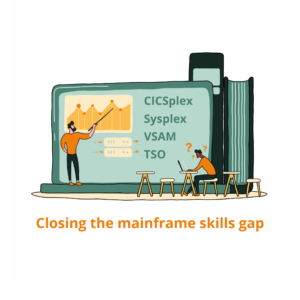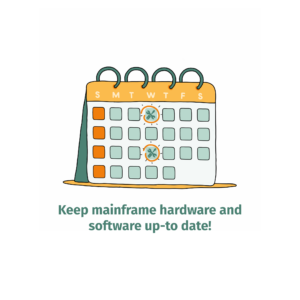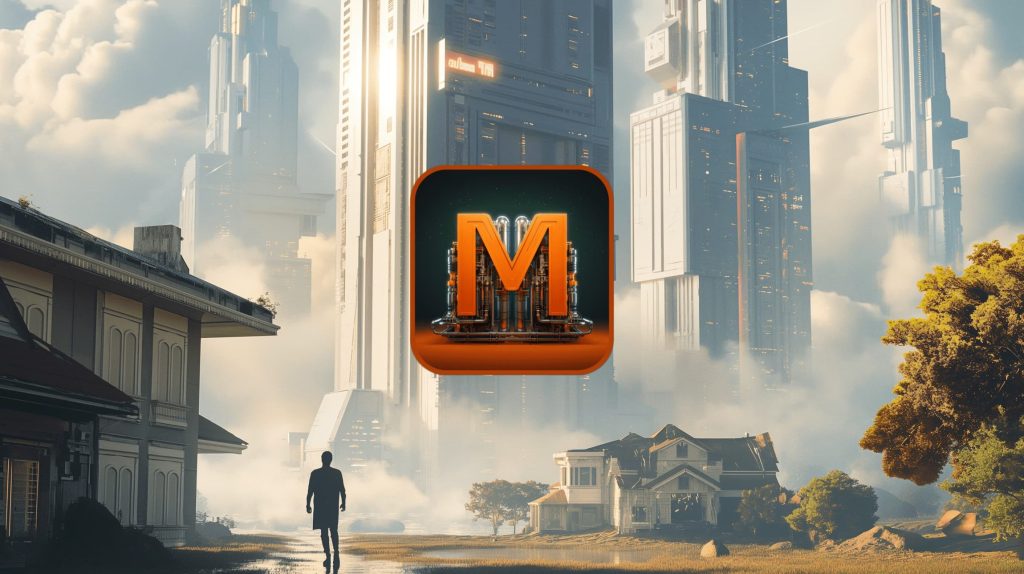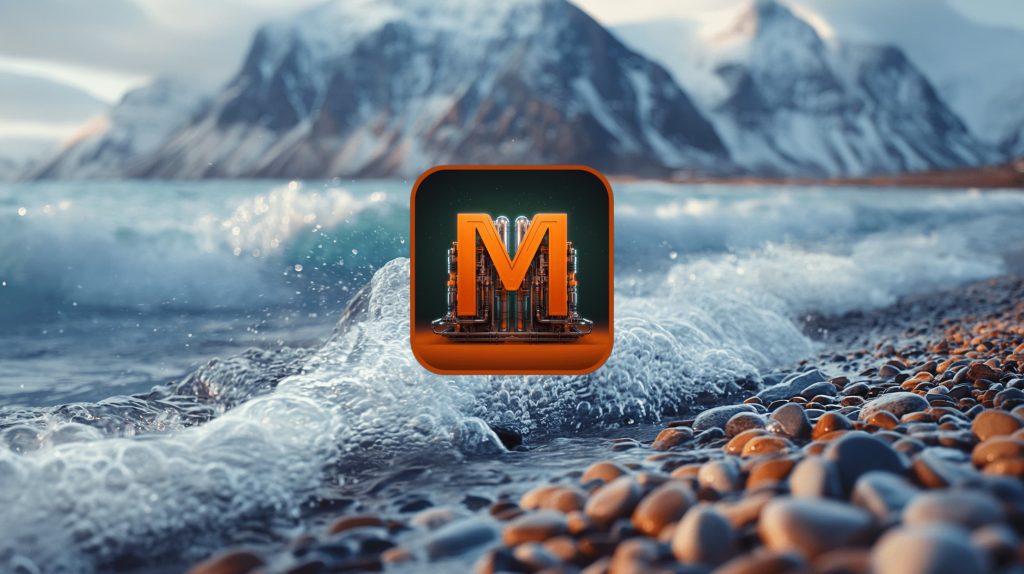With 67% of Fortune 100 companies relying on mainframes, it’s critical to fully understand the global challenges of the mainframe eco-system. Past years have brought so much emphasis on cloud technologies, that a poorly informed bystander could’ve been under an impression that mainframes are soon to become obsolete. That, of course, was always far from reality. The vast majority of the world’s largest banks, insurers, telcos and retailers are completely dependent on mainframes. And if the undisrupted flow of world transactions depends on successful mainframe systems and teams, we should spend some time noticing the problems and acting on the solutions.
Ever since our journey with mainframes started, we had numerous opportunities to gain pertinent insights talking with our current and potential customers, vendors, business partners and colleagues. With huge thanks to everyone who has helped us along this journey to gain a comprehensive perspective on the state of the mainframe affairs, let’s dive into the most important challenges and solutions we are facing today.
Mainframe technology is here to stay, but but the conversation around mainframes must evolve. We see a threefold answer through empowering mainframe teams by in-place modernization, a managed service model and bringing up new generation of mainframers.
Challenges
Existing experts are near retirement
The mainframe landscape has been shaped by a myriad of seasoned professionals, many of whom are now retired or are approaching retirement. These mainframe mavens, having dedicated years or even decades to building and fine-tuning enterprise-level mainframe systems, have left indelible marks on our industry. Many participated in the early construction of foundational enterprise systems based on mainframes, using languages such as Assembly Language, PL/I or COBOL, with comprehension of subsystems like CICS or IMS, a knowledge that is not widely taught today.
This brings about a critical challenge. With such a significant number of mainframe experts retiring, there is a void in experience and expertise, with the next generation needing to quickly gain the necessary skills. Their soon-to-come career conclusions propose the question of succession planning. Mainframe departments need to bridge the gap in knowledge and experience, which leads us to our next critical point.
Lack of relevant skills in house and talent shortage on the market
As seasoned mainframe professionals leave the workforce, current staff members, already tasked with maintaining and operating existing systems, are stretched to their limits. To expect these professionals not only to keep the system running but also to absorb and make sense of the departing expertise, modernize the operations, and concurrently develop new skill sets is not only unrealistic, but it could also lead to serious productivity and system stability issues.
The question then arises – where can we find individuals skilled in the z/OS enterprise environment in today’s market? The answer is, they are hard to come by.
Industry statistics suggest that only a small percentage of today’s computer science graduates have mainframe skills. Furthermore, modern curricula often neglect technologies and programming languages that are critical to many mainframe operations. This leads to a knowledge gap in the market, making it difficult to find individuals who are ready to step into a mainframe role.
Even though mainframe has evolved, and it runs all the up-to-the-minute technologies, it takes a significant amount of time to foster enthusiasm and gain experience for young people who have not had previous mainframe experience
However, there are approaches that we can, and must, consider addressing this. This includes innovative training programs, strategic partnerships with educational institutions, promoting mainframe careers to the younger generation, and leveraging advancements in AI and automation to streamline our operations.

Complexity of working with mainframe
Mainframes, given their architectural complexity and robust functionality, present a unique challenge to IT professionals. Historically, mainframes have been using, what’s often referred, legacy technology However, their capabilities are far from being confined to just legacy operations.
In the present digital era, mainframes are opening to newer technologies and integrating with the larger, diverse IT ecosystem. They can support modern languages like Java, Python or GO, facilitate web services, support AI, and integrate with cloud architectures and DevOps practice across heterogenous IT systems, all while continuing to provide unparalleled scalability, reliability, and security.
However, this newly acquired versatility, while advantageous, also adds to their complexity. The mainframe environment is no longer just about mastering specific areas like security protocols, backup processes, middleware configuration, transaction systems, or database management. It now demands a wider breadth of knowledge, encompassing both traditional mainframe skills and an understanding of modern IT practices and trends.
For instance, understanding distributed systems and cloud architectures, knowledge of DevOps practices in a mainframe context, the ability to work with APIs for mainframe and non-mainframe communication, and expertise in modern programming languages are increasingly becoming necessary.
Keeping mainframe hardware and software up-to date
The scarcity of skilled professionals not only affects our ability to innovate but also threatens the basic integrity and stability of our existing mainframe operations. This leads to inability to harness the full potential of newer versions of mainframe systems, which offer substantial benefits ranging from enhanced security measures to improved stability and support for modern features and functionalities.
Staying current with hardware and software updates is not just about leveraging the latest features or performance improvements; it’s also about mitigating risk. Failing to apply timely updates can leave systems vulnerable to security threats, potentially causing data breaches and service disruptions.
Similarly, software stability is directly influenced by its support status, and a robust maintenance schedule is crucial for operational efficiency. Regular system maintenance includes tasks like system checks, tuning, debugging, and software updates. However, when resources are stretched thin, such regular maintenance is often overlooked, leading to the potential for system degradation over time. When software versions become outdated, they often lose vendor support, which means no more security patches, updates, or technical help in case of issues. This puts the organization at risk of system failure, increased downtime, and can even lead to compliance issues.

Managing the costs of running mainframe
Maintaining older systems is indeed a costly endeavour, regardless of the domain. The costs encompass a variety of aspects, each significant in its own right. The procurement of new hardware, a critical aspect of mainframe modernization, often involves a substantial capital investment.
The extension of vendor support also entails considerable costs, especially for both hardware and software components. These costs typically escalate over time as older versions become more expensive to support due to their outdated architecture and compatibility issues.
Transitioning from an older version to a significantly newer version of a mainframe system is rarely a straightforward process. It requires careful planning, execution, and testing to ensure the new system functions as expected. This process consumes a considerable amount of resources, including processor time and memory, which can lead to an increase in operational costs.
Software licensing, particularly for software under the Monthly License Charge (MLC) scheme, can also add to the overall expense. During a prolonged migration, you might have to run two versions of the same software concurrently for an extended period, leading to an increase in MLC costs. Comprehensive and systematic testing is vital during this period to ensure that applications and data behave consistently between the old and new software versions. The testing phase can be both time-consuming and resource-intensive, further adding to the costs.
Furthermore, it’s important to consider the hidden costs such as downtime during migration, potential business disruptions, training for staff to handle the new systems, and potential loss of efficiency during the transition period.
Therefore, when planning for mainframe modernization, it’s crucial to conduct a thorough cost-benefit analysis. The focus should not just be on immediate acquisition costs but also the ongoing operational and maintenance costs, along with potential future savings from increased efficiency and modern capabilities. Effective project management and resource planning are vital to ensure the modernization process is carried out in the most cost-effective and efficient manner possible.
Mainframe modernization and breaking the silos
It’s essential to recognize the potential of mainframes as part of a modern IT landscape. Mainframes, often seen as legacy systems, indeed possess robust features that are time-tested for enterprise-grade workloads, including high levels of security, reliability, and processing power. Unfortunately, many organizations fail to utilize full potential of today’s mainframe. They keep mainframes isolated from modern technologies, effectively creating silos that hinder integration and innovation.
This isolation does not only limit opportunities in application development and response to market demands but also impacts an organization’s ability to attract and retain talent, particularly from the younger generation who are keen on working with diversified tech stacks.
The answer to both issues is mainframe modernization. Mainframe environment should be made compatible with modern technology standards and platforms. For instance, modern programming languages such as Java, Python, and JavaScript can run on mainframes, and they offer better compatibility with contemporary development practices. The integration of mainframe systems with other platforms can be achieved by using modern interface protocols, such as RESTful APIs, which allow different systems to communicate and share data efficiently. This might involve considerable work initially, considering the significant differences between mainframe and modern systems. However, the long-term benefits are worth it: improved operational efficiency, increased agility, and enhanced ability to innovate. Furthermore, mainframe systems can also benefit significantly from the integration of modern technologies like artificial intelligence and machine learning, enhancing capabilities in data analysis, predictive analytics, and automated decision making.
Additionally, adopting modern practices such as DevOps and Agile methodologies can bridge the gap between the mainframe and non-mainframe worlds, making these systems more adaptable and easier to integrate. Containerization, for instance, has also emerged as a promising approach to make applications portable across different systems, including mainframes.
Raising the level of communication between mainframe and non-mainframe teams is essential. These teams must understand each other’s language, tools, and methodologies to work together effectively. Efforts to foster this mutual understanding could include cross-training and collaborative projects.
Mainframe modernization and breaking the silos allow organizations to leverage their existing mainframe assets while participating fully in the digital economy. By fully leveraging and integrating the potentials of mainframes with the new-age technological landscape, businesses can ensure they are well-positioned to meet evolving market demands, drive innovation. It also makes the mainframe environment more attractive to younger IT professionals who are more familiar with these modern technologies and methodologies.
Risks of a neglected Mainframe system
All the pain points mentioned also have their risks, which inevitably, and almost as a rule, materialize at the most inconvenient times.
Downtime
The main risk, often realized in situations where system management is compromised, is an increase in system downtime. The system ceases to work partially or in full if there is inadequate care for it, either because, for instance, versions are not kept up-to-date or there is no investment in optimization, which falls under preventive maintenance. Additionally, experienced experts or teams need significantly less time for system recovery than individuals who lack knowledge, skills, and experience.
Jeopardized business continuity / Operation risk
Business continuity is also significantly disrupted, which is particularly noticeable in organizations that have direct interaction with end users, such as financial institutions, health insurances, and public or state institutions. In fact, a disruption of operations has a direct impact on the functioning of the city/area/state.
Customer retention
Retaining a customer or even attracting new ones under conditions where IT infrastructure does not meet business continuity requirements is practically impossible. Unless they are forced, they will opt for other options (companies) available in the market.
Revenue loss
Losing customers equals revenue reduction, and not just in the short term but as a result not of bad business but of poor business support from the IT system.
Long application delivery lifecycle
On the mainframe, if it has not already been hit by the wave of modernization, which it probably hasn’t considering the lack of staff, all processes that would speed up the cycle of launching applications or their new versions on the market are done through more or less manual activities, more prone to errors, and therefore bugs. Reduction in the scope of testing, inability to maintain, disrupted work continuity, inability to modernize, all make progress extremely slow.
Inability to keep pace with market needs
And ultimately, you lose step in the market. Opportunities, availability, and innovation decrease. And everything starts over. Of course, to address all challenges and avoid risks, solutions always exist. The question is just, what is the most appropriate response? What will truly help? Not short term. Not apparent. But something that will respond to user needs in the long term.

Possible Solutions
Of course, to address all challenges and avoid risks, solutions always exist. The question is, which is the most appropriate response? What is it that will truly help? Not short-term. Not superficially. But something that will respond to user needs in the long term.
Let’s explore the possible responses to the presented challenges. We are going to dig deeper into each solution in our next blog post.
Outsourcing
Outsourcing your mainframe infrastructure usually means everything (hardware, software, and operations) is handed over to the outsourcing provider. This can significantly restrict flexibility if business or technology adjustments are required. Moreover, it usually means that in-house personnel are not needed any more or they are being transferred to outsourcing provider.
Empowering Mainframe Teams
Managed Services offers the possibility to empower existing in-house team with external resources. Jointly, they form a long-term symbiotic partnership between the user and the managed service provider. This model avails a broader spectrum of external experts, which can be pivotal for platform enhancements, in-house staff development through knowledge transfer, and filling operational gaps, covering a vast range of system activities.
Hiring New Staff
Building new teams with freshly hired personnel is obvious, but usually not viable solutions since there are simply not enough candidates with mainframe skills on the market. Usually, mainframe customers must organize themselves specialized education for young graduates to gain mainframe skills. Such an education requires significant time since it necessitates foresight and planning so that the newcomers, besides acquiring the requisite knowledge, get adequate time to acquaint themselves with the system and its operational procedures.
Freelancers
Ad-hoc requirements, especially during intensive projects, can be addressed by hiring freelancers either on a short-term or long-term basis. While this might be efficient, you can’t build robust core team with freelancers. Moreover, many freelance specialists in the market are often retired professionals who typically shun sustained, long-term commitments. Thus, this approach isn’t always conducive to mitigate operational risks.
Migration to other platforms
Migrating from a mainframe is arguably one of the most intricate, expensive, and time-consuming endeavours. Transitioning to alternative systems or cloud platforms is a herculean task. The migration process is fraught with substantial risks and invariably demands a consortium of experts from diverse domains. Meticulous planning, a willingness to revamp the modus operandi of enterprise systems, and a paradigm shift in thought processes are prerequisites. Furthermore, from a mainframe CTO’s perspective, migrating off a mainframe doesn’t merely involve a technical transition. It necessitates a cultural shift, understanding the nuances of the new environment, and ensuring the existing workforce is aptly retrained. The overarching goal is not just technological adaptation but ensuring that the new system aligns seamlessly with the organization’s strategic objectives and future growth trajectories.
In conclusion
Mainframe technology is here to stay. By prioritizing mainframe modernization, businesses can harmonize the old with the new, ensuring they tap into the best of both worlds. The costs, while significant, can be justified with a forward-looking vision that values reliability, security, and scalability. By weaving mainframes into the tapestry of modern IT solutions, enterprises can drive innovation without sacrificing stability.
However, the biggest challenge remains skills gap. It can be addressed with empowering existing teams with external resources, while building a new generation of mainframers with mix of skills.
Moreover, the conversation around mainframes must evolve. A concerted effort is needed to dispel myths, foster knowledge exchange between generations, and reimagine the mainframe’s role in today’s digital economy. This requires a combination of strategic investments, holistic solutions, and a culture of continuous learning and adaptation. In the grand narrative of technological evolution, mainframes stand as a testament to enduring innovation. It’s our collective responsibility to ensure they continue to thrive, adapt, and serve in an age defined by transformation. As we look to the horizon, the story of mainframes is far from over; it’s simply evolving. And as technologists, we hold the pen.
Related News



